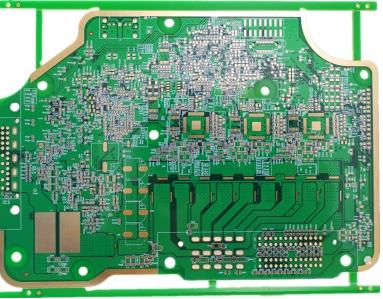One solution to help designers and design teams meet these challenges is to adopt a combination of software and hardware design technology, that is, the combination of software and hardware design of the circuit board (PCB). Although this is not the latest technology, a comprehensive combination of factors shows that this technology is universal and can reduce costs. From the traditional rigid PCB connected by cables to today’s flexible and hard board technology, from the perspective of cost, the interconnection of two rigid boards and flexible cables is feasible for short-term design; however, this needs to be done every time. Connectors are installed on the boards, and the connectors need to be assembled to the circuit board and cables-all of which will increase the cost. In addition, the rigid PCB connected by the cable is prone to electrical false welding, which can lead to failure. In contrast, the combination of soft and hard circuits can eliminate these virtual solder joints, make them more reliable, and provide higher overall product quality.
The traditional design consists of a rigid board using flexible cables and connectors, while the soft-hard design is embedded on the soft-hard board with two built-in soft layers in the middle. The overall structure is a group of four-layer circuit boards. The manufacturing costs of both designs are based on the PCB manufacturer’s quotation, including assembly costs. In addition, the cost of two separate four-layer circuit boards, connectors, and cables in traditional design factors need to be added.

When the number of manufacturing is more than 100 sets, compared with the traditional design scheme, the combination of soft and hard design will save time and increase efficiency. The main reason is that the soft-hard combination circuit does not contain any connector components/cables and does not require connector assembly. Not only that, they are reliable and well crafted. And this is just the tip of the iceberg.
With the soft and hard combination technology, the designer does not need to use connectors, wires and cables to interconnect multiple PCBs in a single package. Because the soft and hard combination board does not require cable assembly, this reduces the overall assembly consumption and testing complexity. Both of these help reduce costs. In addition, fewer components need to be purchased, which reduces the bill of materials, thereby reducing supply chain risks and costs. The soft and hard board makes the maintenance of the product more convenient and saves the cost in the entire product life cycle.
Manufacturing, assembly, testing, and logistics costs are factors that cannot be ignored for any project, design, and cost control that uses a combination of software and hardware design technology. The combination of software and hardware design often requires a mechanical team to assist in the flexible design and PCB integration of the final product. This process is very time-consuming, costly, and error-prone.
To make matters worse, PCB design tools often ignore the folding and assembly problems of soft and hard design. The combination of software and hardware design requires designers to think and work with 3D thinking. The flexible part can be folded, twisted, and rolled up to meet the mechanical design requirements. However, traditional PCB design tools do not support 3D circuit board design or bending and wrinkle simulation of rigid design parts, or even the definition of different layer stack design parts, including flexible design parts.
Because of this, the combination of software and hardware designers are forced to manually convert the rigid and flexible parts of the 3D design into a flat, 2D production format. Later, the designer also needs to manually record the soft design area, and carefully review to ensure that no components or vias are placed in the area between rigid and flexible. This process is also restricted by many other rules, and most of these rules are not supported by PCB design software.
In general, compared with the standard rigid PCB designed with traditional PCB software that is at a disadvantage in the competition, designing a hard and soft PCB requires more effort. Fortunately, modern design tools with advanced 3D functions can support the bending definition and simulation of flexible design parts, as well as the definition of different design parts and different layer stacks. These tools largely eliminate the dependence on mechanical CAD tools when dealing with flexible parts, saving designers and design teams time and money.
Through the use of modernPCB design tools, developers and circuit board manufacturers coordinate in time, which promotes the time-saving and efficiency-saving combination of software and hardware technology. Compared with traditional rigid circuit board and cable design, the combination of soft and hard design requires close cooperation between designers and manufacturers. Successful production of rigid-flex boards requires designers and manufacturers to jointly develop design rules, including: the number of layers in the design, material selection, via size, bonding method and size control. With appropriate design tools, clear definitions and trade-offs can be made at the initial stage of the design, thereby optimizing the rigid-flex board and further reducing the overall cost.